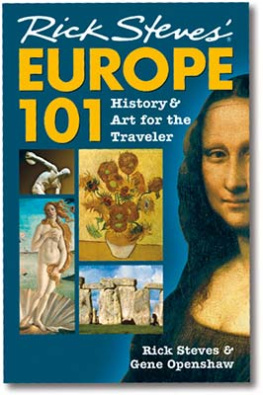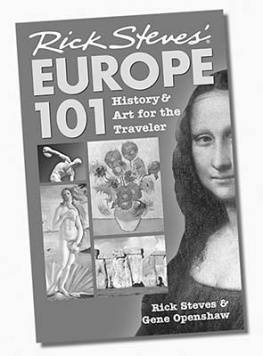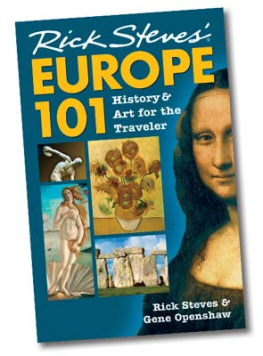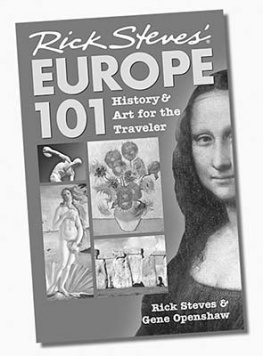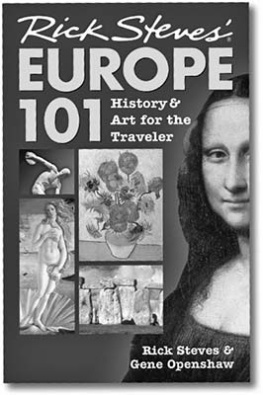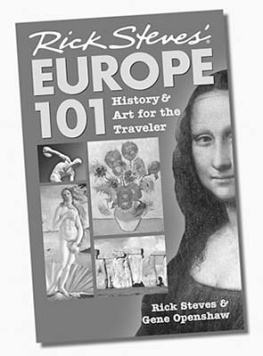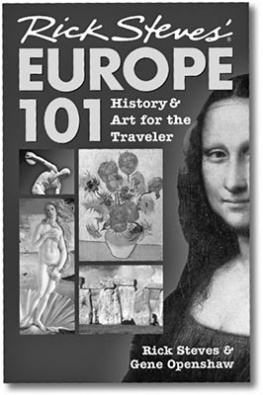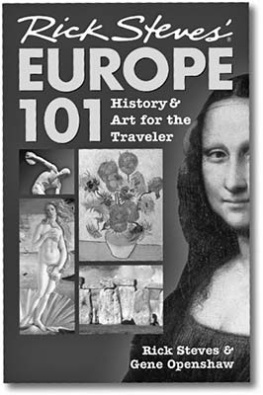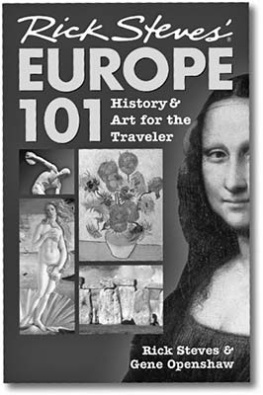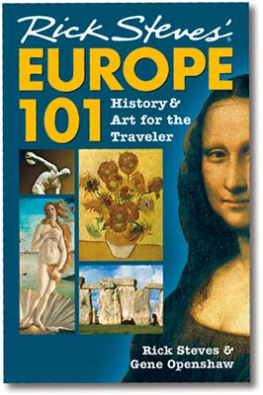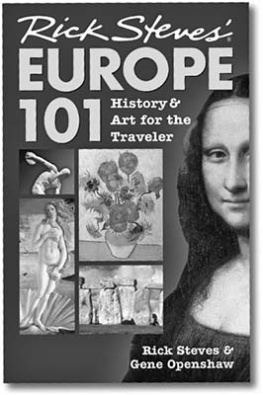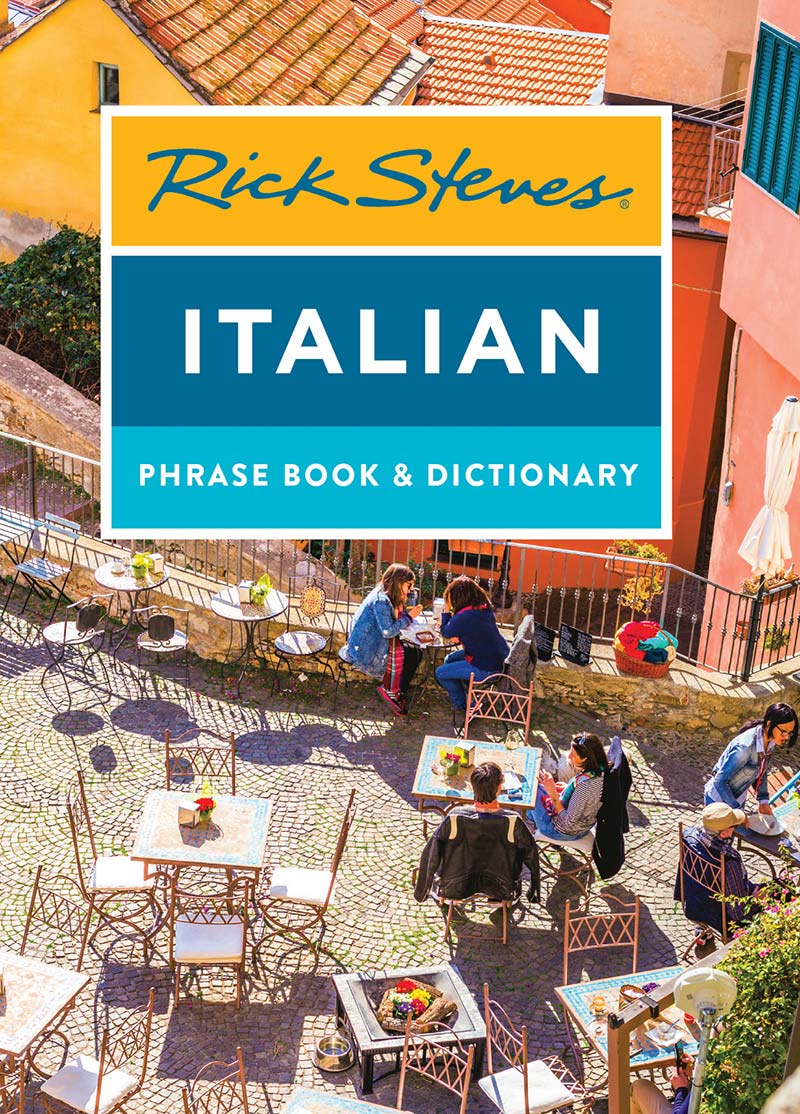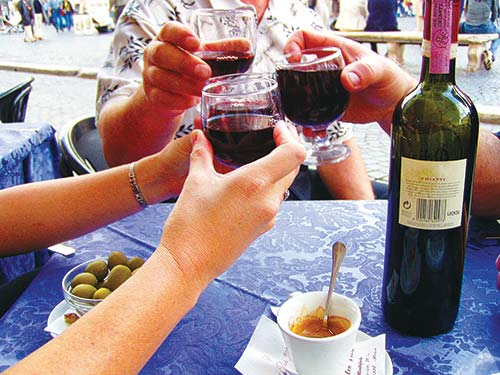Contents
Contents
Rick Steves
ITALIAN
PHRASE BOOK & DICTIONARY
Hi, Im Rick Steves. Im the only monolingual speaker I know whos had the nerve to design a series of European phrase books. But thats one of the things that makes them better. You see, after more than 30 years of travel through Europe, Ive learned firsthand: (1) whats essential for communication in another country; and (2) whats not. Ive assembled the most important words and phrases in a logical, no-frills format, and Ive worked with native Europeans and seasoned travelers to give you the simplest, clearest translation possible. But this book is more than just a pocket translator.
The words and phrases have been carefully selected to help you have a smarter, smoother trip in Italy. The key to getting more out of every travel dollar is to get closer to the local people, and to rely less on entertainment, restaurants, and hotels that cater only to foreign tourists. This book will not only help you order a meal at a locals-only Venetian restaurantbut it will also help you talk with the family who runs the place...about their kids, travel dreams, and favorite flavors of gelati. Long after your memories of museums and Roman ruins have faded, youll still treasure the personal encounters you had with your new Italian friends. While Ive provided plenty of phrases, youll find it as effective to use even just a word or two to convey your meaning, and rely on context, gestures, and smiles to help you out. You could walk into a post office and struggle with the Italian phrase for I would like to buy stamps for two postcards to the United States, please. Or you can walk up to the stamp counter, smile, show the clerk your postcards, and say America, per favore (please).
Andpresto! Youve got stamps. (For more advice, see the Tips for Hurdling the Language Barrier chapter on .) To get the most out of this book, take the time to internalize and put into practice my Italian pronunciation tips. But dont worry too much about memorizing grammatical rules, like the gender of a nounforget about sex, and communicate! This book has a nifty menu decoder and a handy dictionary. Youll also find tongue twisters, international words, telephone tips, and two handy cheat sheets. Tear out the sheets and slip them into your pocket, so you can easily memorize key phrases during otherwise idle moments. A good phrase book should help you enjoy your travel experiencenot just survive itso Ive added a healthy dose of humor.
And as you prepare for your trip, you may want to read the latest edition of one of my many guidebooks on destinations in Italy. Italians are more social and communal than most Europeans. And because theyre so outgoing and their language is so fun, Italians are a pleasure to communicate with. Be melodramatic and talk with your mani (hands). Hear the melody; get into the flow. Italians want to connect, and they try harder than any other Europeans.
Play with them. Even in non-touristy towns, where English is rare and Italian is the norm, showing a little warmth lets you hop right over the language barrier. My goal is to help you become a more confident, extroverted traveler. If this phrase book helps make that happen, or if you have suggestions for making it better, Id love to hear from you at . Buon viaggio! Happy travels!
User-friendly Italian is easy to get the hang of. Some Italian words are so familiar, youd think they were English.
If you can say pizza, lasagna, and spaghetti, you can speak Italian. Italian pronunciation differs from English in some key ways: C usually sounds like C in cat. But C followed by E or I sounds like CH in chance. CH sounds like C in cat. G usually sounds like G in get. GH sounds like G in spaghetti. GLI sounds like LI (pronounced lee) in million. GLI sounds like LI (pronounced lee) in million.
The G is silent. GN sounds like GN in lasagna. H is never pronounced. I sounds like EE in seed. R is rolled as in brrravo! SC usually sounds like SK in skip. Z usually sounds like TS in hits, and sometimes like the sound of DZ in kids. Z usually sounds like TS in hits, and sometimes like the sound of DZ in kids.
You can communicate a lot with only a few key Italian words: prego, va bene, cos, questo/quello, and vorrei. Prego (preh-goh) is the all-purpose polite word. It can mean May I help you? or Here you go or Youre welcome or After you (when someones holding the door for you). Va bene (vah beh-nay), meaning Its good, is used constantly. Its the all-purpose OK that youll hear a hundred times a day. Cos (koh-zee) basically means like this.
It can be handy, for instance, when ordering food (to show them how much of the eggplant you want on your antipasti plate). Questo (kweh-stoh, this) and quello (kweh-loh, that) combine conveniently with gestures. Just point to what you want and say quello. Vorrei (voh-reh-ee) is an easy way to say I would like. Its the standard and polite way to make a request in Italian. Vorrei un caff, per favore (I would like a coffee, please).
A few language tips will help you learn some Italian and get the most out of this book. For instance, have you ever noticed that most Italian words end in a vowel? Its o if the word is masculine and a if its feminine. So, a baby boy is a bambino and a baby girl is a bambina. A man is generoso (generous), a woman is generosa. In this book, we sometimes show gender-bender words like this: generoso[a]. Adjective endings agree with the noun.
Its cara amica (a dear female friend) and caro amico (a dear male friend). Sometimes the adjective comes after the noun, as in vino rosso (red wine). Adjectives and nouns ending in e dont change with the gender, such as gentile (kind) or cantante (singer)the same word applies to either sex. Plurals are formed by changing the final letter of the noun: a becomes e, and o becomes


